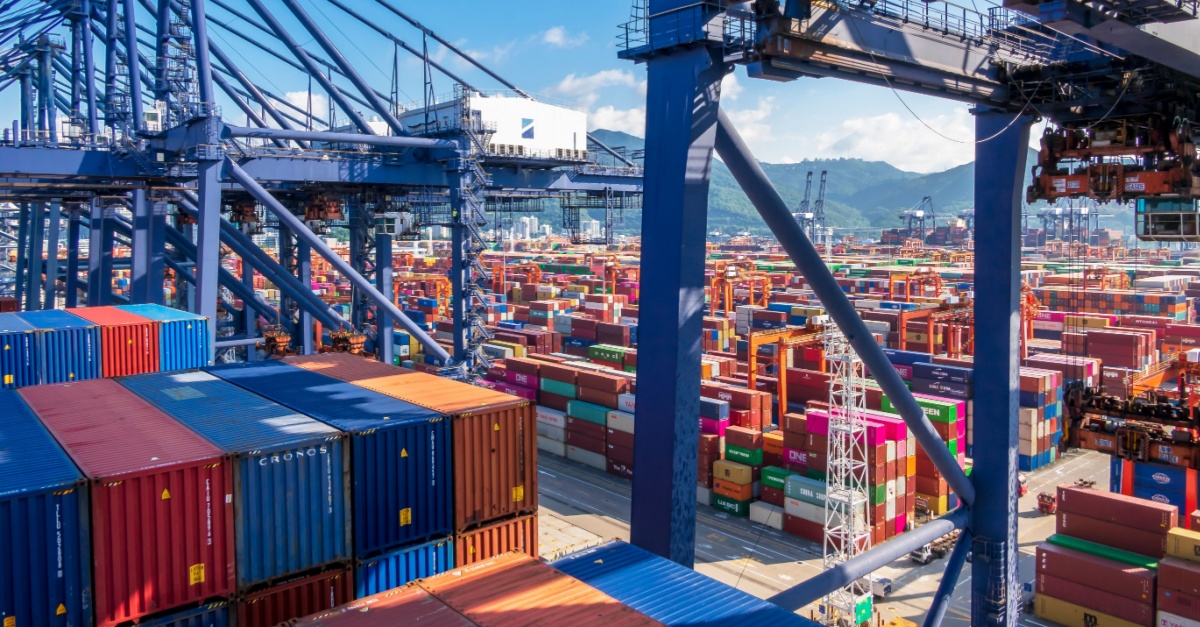

A sharp pullback in imports from Asia is squeezing trucking capacity in inland markets even as seasonal demand continues to lift spot rates across the country. At the same time, the federal government is imposing new tariffs across multiple sectors, from cranes and cargo-handling equipment to commercial vehicles and buses. But the new tariffs have stirred anxiety among importers and port operators.
In Washington, small businesses are mounting a legal challenge against the administration’s tariff authority, arguing that it amounts to an unconstitutional tax. These and other developments across the freight world are pointing to a volatile intersection between trade policy and domestic freight movement, where even modest regulatory shifts ripple through carrier pricing, port infrastructure, and industrial investment.
Truckload capacity across key inland hubs is tightening as declining import volumes disrupt freight networks. However, DAT Freight & Analytics reported that the national dry van spot rate rose to $1.70 per mile, 5 cents higher than last year, with Midwest carriers earning $1.92 per mile. Fewer imports from Asia, which have gone down sharply since a 25.7% surge earlier in the year, have left fewer trucks for return port loads.
Markets such as Las Vegas and Stockton, California, have seen rates jump up to 33% year over year, with outbound load posts from Las Vegas up 45% as shippers compete for trucks. DAT analyst Dean Croke called the imbalance “unprecedented,” linking it to tariff-related import fluctuations. Analysts expect capacity to stabilize only after import volumes recover above 2 million TEUs per month.
Truckload spot pricing in the U.S. is inching up due to peak season demand convergence, a driver crackdown, and lingering import weakness. The DAT dry van rate is up 6 cents year over year, while Truckstop.com recorded fluctuations near $1.93 per mile. The Cass Linehaul Index also rose 2.6% in September, even though it remains 1% below 2023 levels.
Federal regulators have issued more than 5,000 out-of-service orders to drivers failing English proficiency standards since June, causing concentrated disruptions in Southern California and along U.S.-Mexico corridors. And ITS Logistics’ Paul Brashier described the market as “soft but steady,” noting a stronger rate pressure in long-haul and border markets.
A coalition of small businesses has petitioned the U.S. Supreme Court to affirm lower court rulings declaring President Donald Trump’s emergency tariffs unlawful. In an October 20 filing, Learning Resources argued that Trump exceeded authority under the 1977 International Emergency Economic Powers Act (IEEPA) by imposing import duties ranging from 10% to 50%, amounting to an estimated $3 trillion tax increase over a decade.
The administration maintains that the tariffs are legal under IEEPA provisions, which allow the president to “regulate importation” during emergencies. Meanwhile, V.O.S. Selections and several state governments contend the statute never intended to grant open-ended power to impose tariffs.
Importers face a new set of 150% tariffs on Chinese-made port cranes and handling equipment, including reachstackers, straddle carriers, and terminal tractors, all of which have compounded previous tariffs up to 270% in some cases. The U.S. Trade Representative’s rule also overhauls fee structures for roll-on/roll-off vessels, which are now based on tonnage instead of vehicle count.
Port operators have signaled that the change could double procurement costs, jeopardizing modernization projects. Vespucci Maritime’s Lars Jensen called the tariffs “another headwind,” increasing import costs and undermining export competitiveness. ICS Secretary General Thomas Kazakos cautioned that the measures risk “damaging U.S. exports,” describing them as protectionist.
A new executive order signed by President Trump introduces 25% tariffs on imported medium- and heavy-duty trucks, along with other related parts, including a 10% tariff on buses, effective November 1. The order targets Class 3 to Class 8 vehicles, ranging from school buses to tractor-trailers, on national security grounds, citing their role in moving over 70% of U.S. freight.
Manufacturers under the USMCA can apply for partial exemptions based on North American content, while U.S.-assembled vehicles may reclaim 3.75% of tariff costs annually for five years. The measure also allows reduced duties on qualifying steel and aluminum from Canada and Mexico.
We understand that tariffs and trade wars have created an unstable environment. However, we can promise you a few things amid this turbulent period. When you call, we answer. No matter the hour. We respond when you have urgent shipping needs. No matter the challenge.
When you work with VCPB, you can always count on: